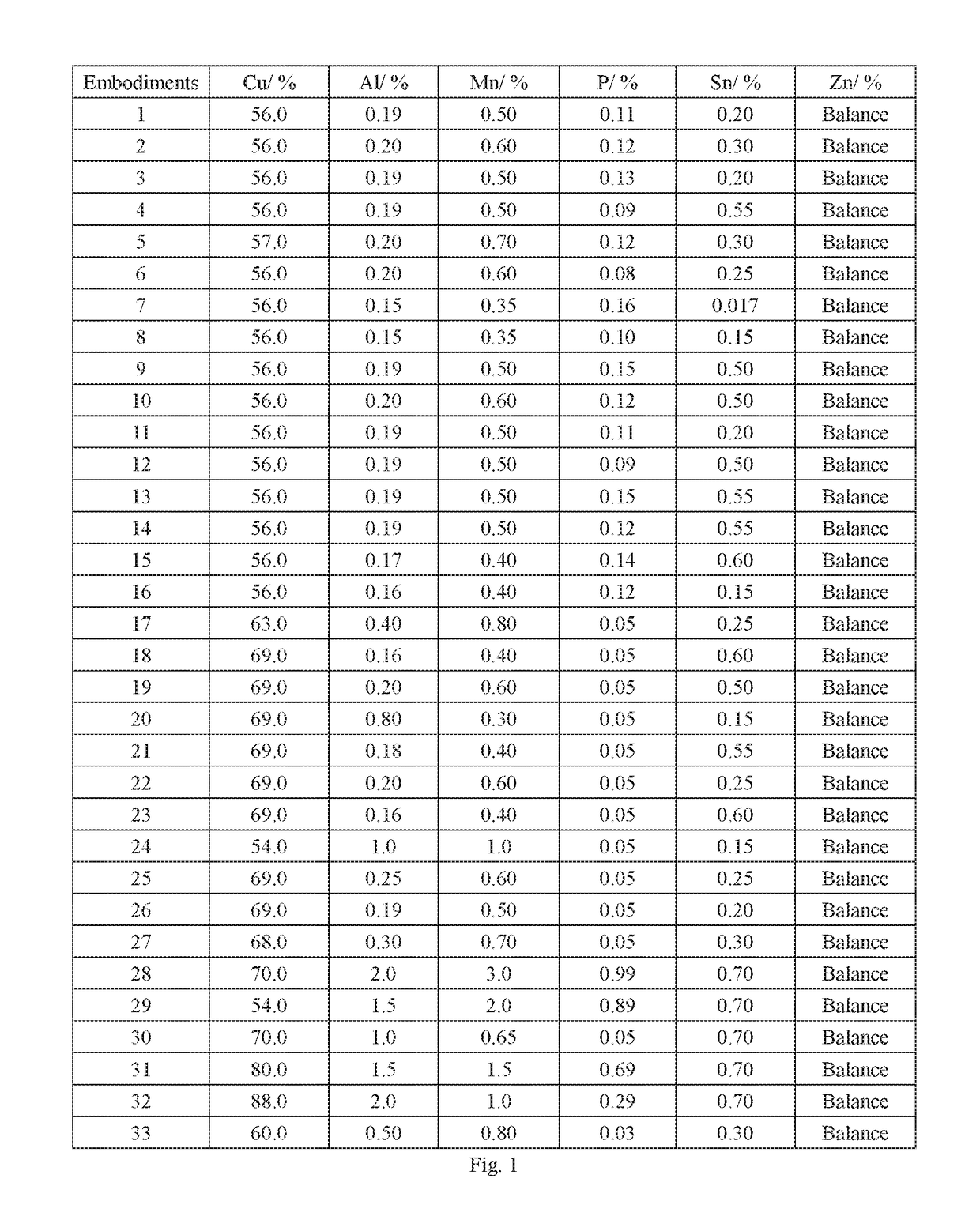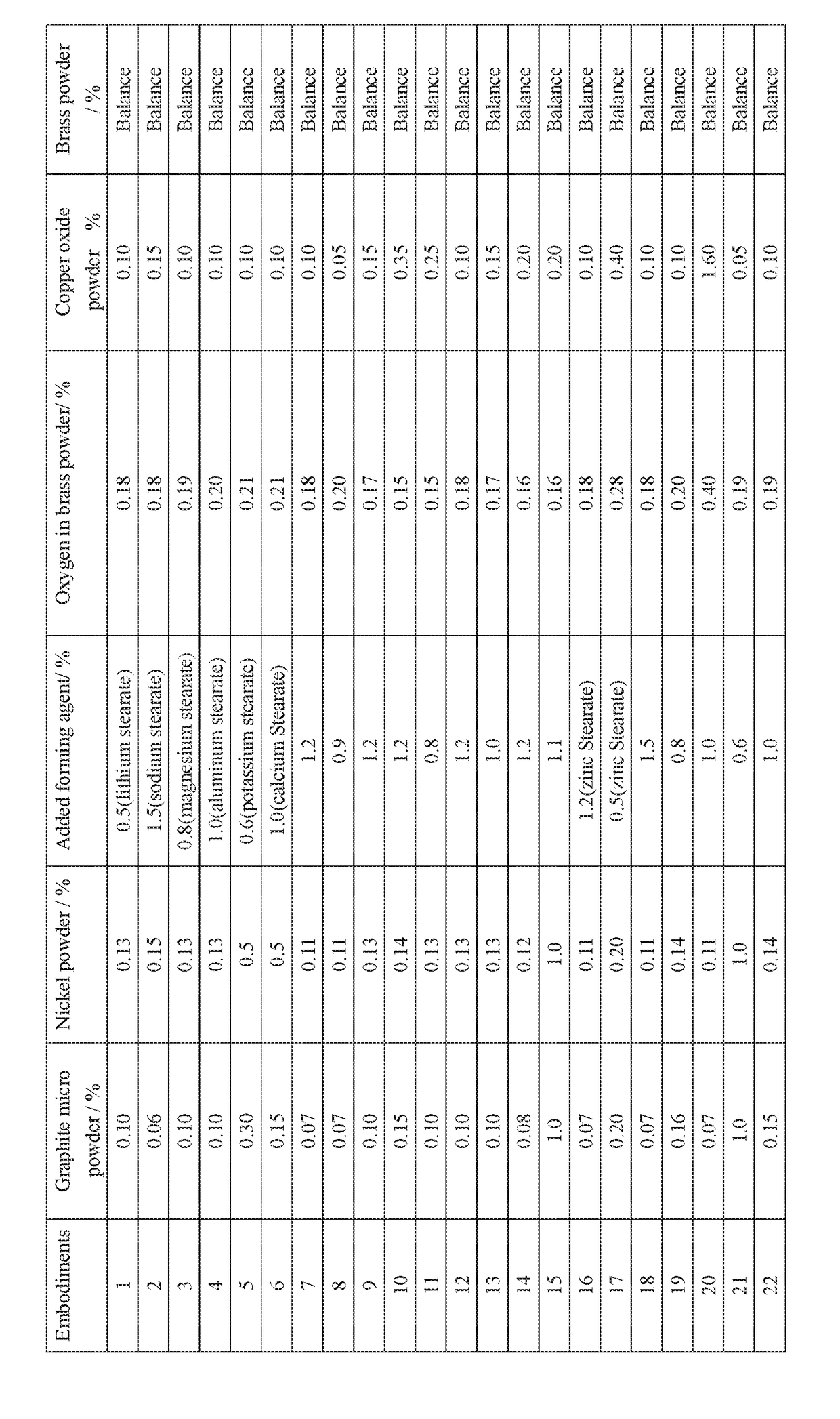The disused lead-brass comes into contact with the soil, and the lead contained in it enters the soil under the long-
term effect of rain and
atmosphere, thus contaminating the soil and water sources.
When the disused lead-brass is burned as garbage, lead vapor is emitted into the
atmosphere, causing great harm to the
human body, and thus its application is increasingly subject to strict restrictions.
Since the lead is always present in the brass substrate, these methods cannot fundamentally eliminate the harmful effects of the lead.
It must be pointed out that compared with the free-cutting lead-brass, all the lead-free and free-cutting brass currently has some problems in the
processing performance, use performance and cost, for example, hot and cold
processing performance, cutting
processing performance and other process performance or dezincification resistance,
ammonia fume resistance and other use performance, and its overall performance and the performance
price ratio are still much inferior to those of lead-brass.
When the
metal bismuth is used as the main element to improve the cutting performance of the brass, the brass with a high content of
bismuth cannot be accepted in the market due to the high price of
bismuth.
The cutting performance of the brass with low content of bismuth is also relatively good, but is still much worse than that of the lead-brass.
On the other hand, the influence of bismuth ions on
human health is still not very clear, and the magnitude of its side effects has not yet been determined.
In some countries and regions, people are still unwilling to accept bismuth brass.
Bismuth with
limited resources is also doomed not to become a major alternative to the lead in the free-cutting lead-brass.
Bismuth can cause the brass to be brittle, which seriously deteriorates the hot workability of the brass.
Its recycled material can even harm the entire
copper processing industry, which seriously reduces its recycling value, and is unfavorable to the market promotion of the bismuth-containing and free-cutting brass.
Antimony is an element that is slightly toxic to the
human body and its leaching concentration in water is very strictly limited.
Although the
antimony brass has better cutting performance, its use is also very limited.
The hot workability of the
antimony brass is also not ideal, and it is prone to thermal
cracking; and the price of
antimony is not cheap, which is also unfavorable for its market promotion.
Magnesium can significantly improve the cutting performance of the brass, but it cannot be added too much, when its
mass fraction exceeds 0.2%, the elongation of the brass begins to decline, and the more the
magnesium is added, the more the elongation performance of the brass declines, which is unfavorable for the use of the brass and not conducive to the application of
magnesium brass.
Magnesium is an element that burns very easily, which poses a great challenge to the control of the
magnesium content in the brass, and is unfavorable for the composition control in the production process.
Adding
phosphorus to the brass is favorable to the improvement of cutting performance of the brass, but at the same time reduces the
plasticity of the brass, so that the hot
cracking tendency of the brass increases during low
pressure casting.
This greatly limits the amount of
phosphorus added to the brass and also greatly limits the use of phosphorus brass as well.
Tin also has a limited effect on improving the cutting performance of the brass.
One type is low-
zinc silicon brass, such as C69300, and due to the high content of copper,
high density and high price, its market share is small.
The other type is high-
zinc silicon brass, which lacks cutting performance.
With increasingly stringent environmental laws and regulations, the
pollution control of its production is also a problem, which is also extremely unfavorable for its application and promotion.
The pressure processing of the
sulfur-based and free-cutting brass is generally difficult and relatively high in cost.
Moreover, as the content of sulfur increases, the more
manganese sulfide is generated, the faster it becomes
slag and floats, and the more obvious the weakening of its cutting action becomes.
However, when manufactured by the melt
casting method, the
manganese sulfide is more likely to float out from the melt, and the effect of improving the cutting performance is weakened more quickly.
However, the practice has shown that the method of adding a plurality of elements for improving the cutting performance is not ideal.
On one hand, due to the interaction between the elements, some can reduce the effect of improving the cutting performance.
Moreover, the addition of rare and precious elements can also increase the cost of the brass quickly, which is also disadvantageous for the marketing applications.
There is limitation in adding various elements to improve the process performance and the use performance of brass.
In the PCT application PCT / CN201308296 entitled “Lead-free and free-cutting high-sulfur manganese-containing
copper alloy and producing method thereof”, the cutting performance of a lead-free
copper alloy is maximally improved by using a method of adding a
sulfide, and it has the best cutting performance in the lead-free and free-cutting
copper alloy that can be industrially
mass-produced, but its cutting performance is still inferior to that of the lead-brass.
In some conditions of use, for example, in the production of valve faucets with very complex shape, a copper rod must be subjected to very complex
thermal deformation, which requires excellent
thermal deformation capability, but the thermal deformability of the
alloy is far from ideal, and under the
large deformation condition, the finished product rate still needs to be improved, resulting in a higher production cost.
Secondly, in this patent, the content of aluminum in the brass obviously exceeds the content of
oxygen, which causes uneven distribution of aluminum and oxygen, the particles added are coarse and unevenly distributed, the aluminum
oxide particles are micron-sized and the interface with the brass is not strong, thereby reducing the strength of the brass and more seriously, greatly reducing the thermal deformability of the brass, therefore canning must be adopted in its thermal forming.
In addition, in this invention, at least 1% of
graphite is added to the brass
composite material, the excessive
graphite not only reduces the cutting performance, but also can decrease the strength of the brass due to the low strength of the graphite / brass interface.
 Login to View More
Login to View More 


